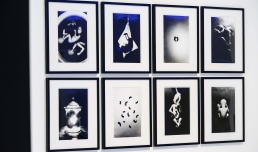Daido Moriyama with Shomei TomatsuTOKYO REVISITED
galleria 3
curated by Hou Hanru, Elena Motisi
valid until 9 April due to the Museum’s first-floor closing
buy online
the only open ticket, valid for 100 years, for one admission to the Museum and all current exhibitions
buy online
valid for access to the Museum during the last opening hour, available online and at the Museum’s digital ticket point only
upon presentation of the membership Card or Carta EFFE
buy online
minors under 18 years of age; disabled people requiring companion; EU Disability Card holders and accompanying person; MiC employees; European Union tour guides and tour guides, licensed (ref. Circular n.20/2016 DG-Museums); 1 teacher for every 10 students; ICOM members; AMACI members; journalists (who can prove their business activity); myMAXXI membership cardholders; European Union students and university researchers in Art and Architecture, public fine arts academies (AFAM registered) students and Temple University Rome Campus students from Tuesday to Friday (excluding holidays); IED – Istituto Europeo di Design professors, NABA – Nuova Accademia di Belle Arti professors, RUFA – Rome University of Fine Arts professors; upon presentation of ID card or badge – valid for two: Collezione Peggy Guggenheim a Venezia, Castello di Rivoli Museo d’Arte Contemporanea, Sotheby’s Preferred, MEP – Maison Européenne de la Photographie; on your birthday presenting an identity document
for groups of 12 people in the same tour; myMAXXI membership card-holders; registered journalists with valid ID
buy online
under 14 years of age
buy online
disabled people + possible accompanying person; minors under 3 years of age (ticket not required)
book online
MAXXI’s Collection of Art and Architecture represents the founding element of the museum and defines its identity. Since October 2015, it has been on display with different arrangements of works.

galleria 3
curated by Hou Hanru, Elena Motisi













Describing themselves as ‘stray dogs running through the city while unconsciously looking around’, the two artists take pictures of everyone who moves in front of them.
Tokyo is one of the most fascinating cosmopolitan cities in the world, offering an infinite wealth of sources of inspiration for artistic creation. Photography, especially street photography, represents its most original expression thanks to famous names such as Daido Moriyama and his master Shomei Tomatsu. They have always been committed to exploring the situations of post-war Japanese society and its contemporary evolution.
Tomatsu actively works by capturing socially and politically engaging scenes. On the other hand, Moriyama likes to immerse himself in the joy and excitement produced by the consumer society. However, both artists share the same way of treating photography more as a way of life than as an artistic genre.
Visitors are invited to physically “revisit” Tokyo, connecting it with Roman reality: a city poised between eternal negotiation with its historic ruins, and futuristic projections for tomorrow.
header: Daido Moriyama, How to Create a Beautiful Picture: Tights in Shimotakaido, 1987 Courtesy: Akio Nagasawa Gallery
videogallery
Radicals: Seijun Suzuki, Kaneto Shindō, Kazuo Ōno
On the occasion of the exhibition, a special screening of films by directors and creatives who share with Daido Moriyama a countercurrent, revolutionary and never conventional look at Japan. The pop and surreal character of Seijun Suzuki (19 luglio > 7 agosto), the more rigorous and austere nature of Kaneto Shindō (9 > 28 agosto) and the mystical essence of Kazuo Ōno’ Butō dance (30 agosto > 18 settembre) represent different manifestations of a common need to narrate the duality of post-war Japan, to bring to light the shadows and fragility of existence, to break taboos, and to reaffirm the individual’s freedom of choice and expression.
contenuti correlati